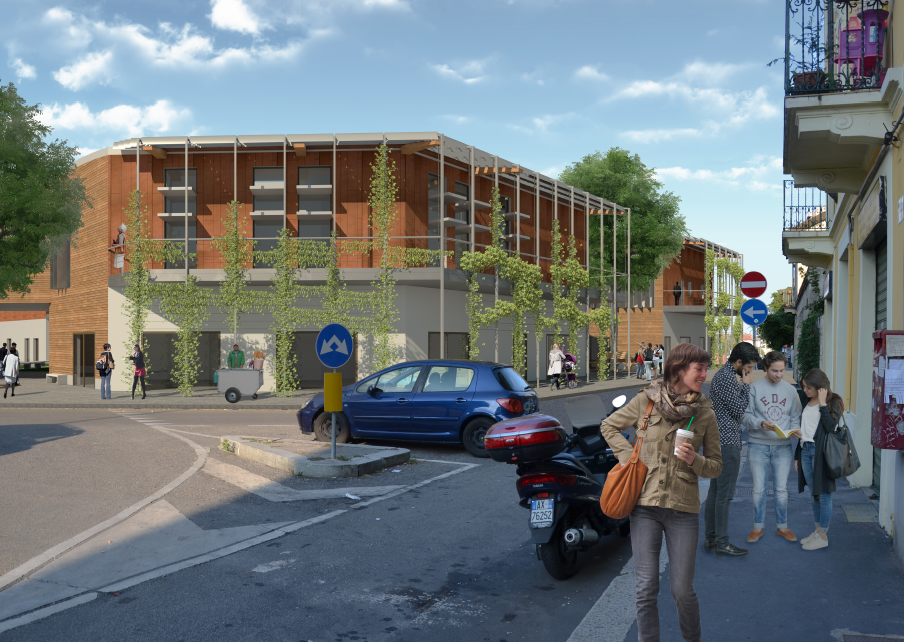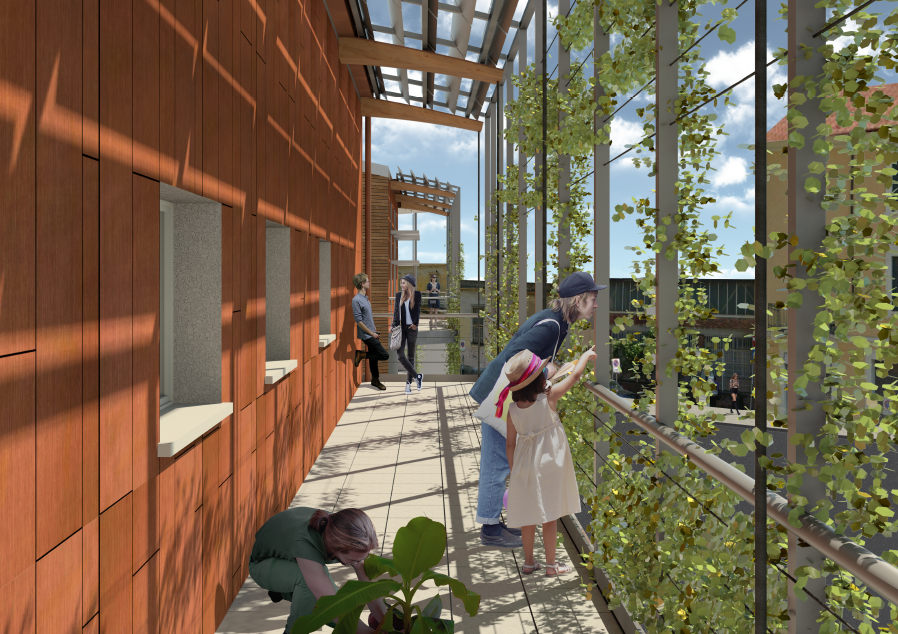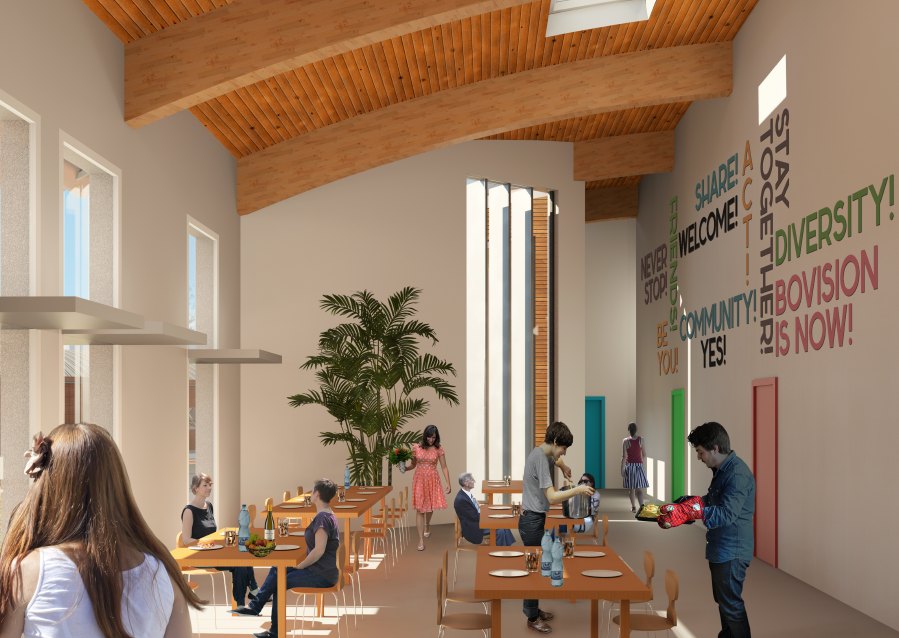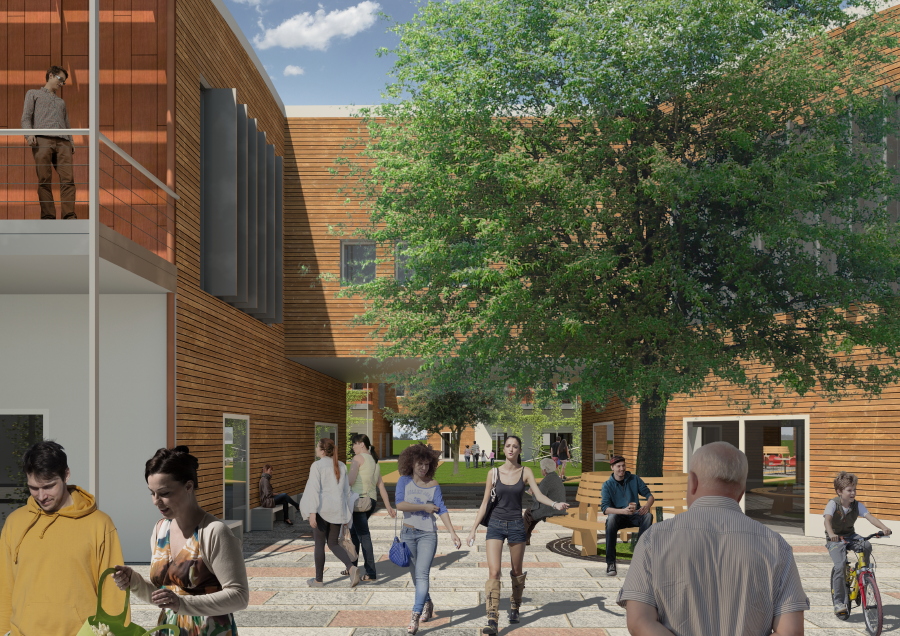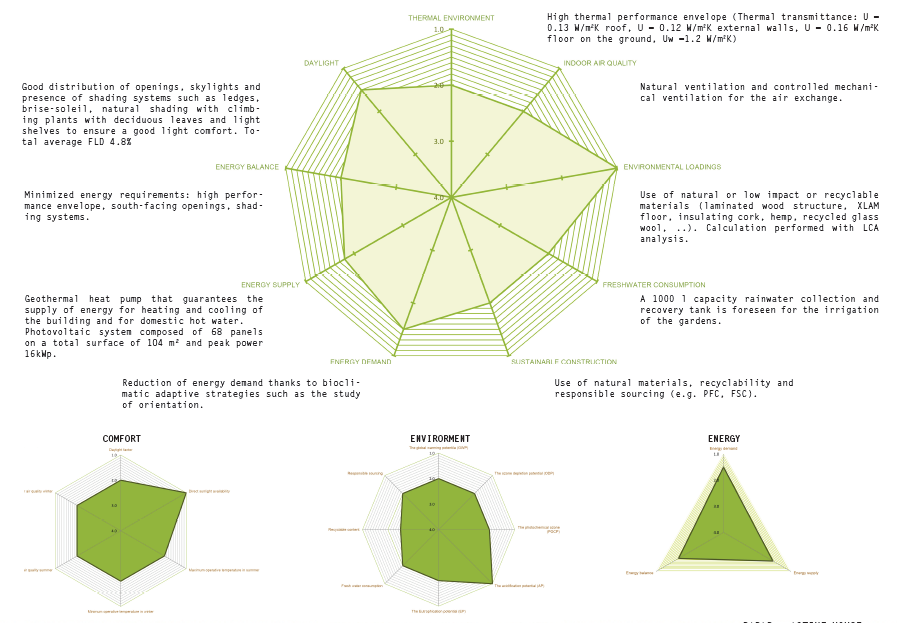Bovision Co-Housing
Comfort:
Ensuring a pleasant level of comfort has been a key goal since the early stages of the project. The two main parameters used to achieve this result have been daylight and natural ventilation. They led the choices both on the architectural level and in the technical definition of the building.
Through the use of specific daylight analysis software, such as Velux Daylight Visualizer, it was possible to control daylight factor and illuminance, in order to distribute light appropriately according to the functions and the needs associated to the different spaces. Working on the details, introducing light shelves to better distribute light in the inner parts of the building plan, allowed to achieve an average DF of 4.8%.
Natural cross ventilation is enhanced through the strategic placement of windows in different orientations and, in addition to that, the chimney effect is activated in the mid-season, thanks to skylight operable windows.
Energy:
In terms of energy, the building has been designed to minimize the needs thanks to the study and application of passive and active strategies.
The former includes the previously mentioned solutions such as the hyper isolated envelope and the presence of shading systems to avoid the overheating.
The energy production is done by integrating renewable sources such as the photovoltaic system and the geothermal heat pump. The first is composed by 68 panels distributed on a total surface of 104 m2 with a peak power of 16kWp. The second is responsible for the energy supply for heating and hot water supply. The overall energy demand is equal to 21 kWh/m2y, resulting as a Class A according to the Casadima certification.
Environment:
The attempt to create a sustainable and energetically efficient building cannot be separated from the conscious and thoughtful selection of building materials. The selected materials have been adopted also taking into account the embodied energy, the potential for recycling and reuse and the type of sources of supply. Toward this goal descends the choice of the greatest possible number of materials of natural origin deriving from recycling processes and from production chains a low environmental impact such as: laminated wood structure, insulating glass wool, hemp fiber and cork. All the wooden materials arrive from responsible supplying sources such as FSC and PFC.
Another environmental strategy has been the adoption of the rainwater collection and recovery tank of 1000 I.
Radar

